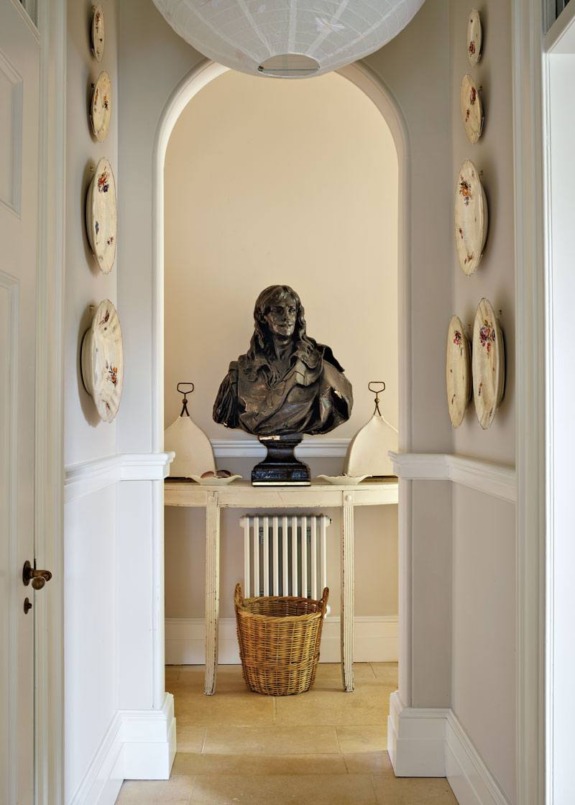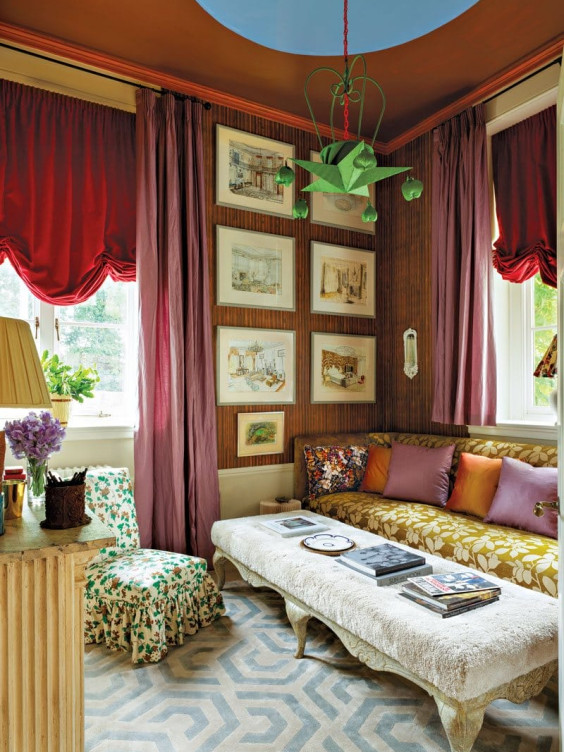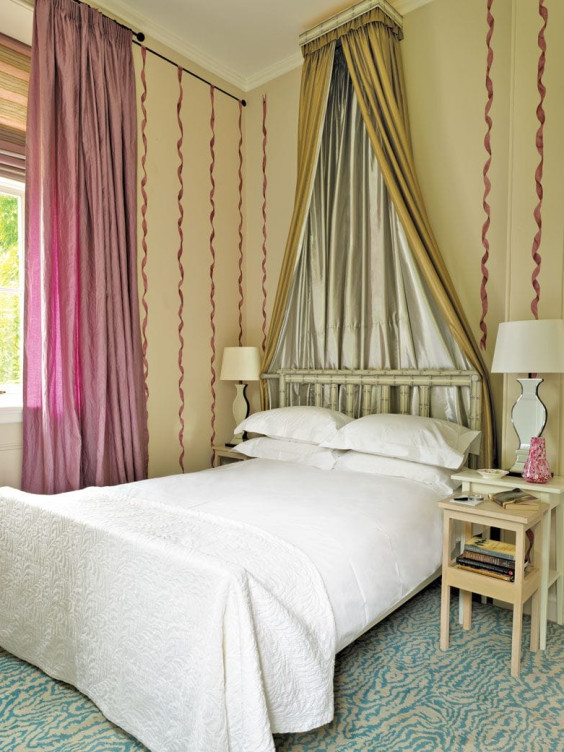Interior Designer Nicky Haslam Adds His Extraordinary Touch to His Dreamy Pavilion in the English Countryside
Filled with watercolors of his most memorable projects, the pastoral retreat brims with personality, wit, and charm

It’s been a busy year for Nicky Haslam, who for half a century has been one of London’s most sought-after interior designers. He’s gained renown, too, as a best-dressed man about town and as a writer of gossip columns and a no-holds-barred memoir that chronicles his Zelig-like course through decades of society drawing rooms on both sides of the Atlantic.
He’s also an admired cabaret singer who followed his 80th birthday last fall with a string of shows, performing favorites from the American songbook. Cole Porter was a friend, after all.


Last November, Bonhams auction house in London hosted a successful sale of art, furnishings, and objets from Haslam’s longtime country home, a 17th-century folly in Hampshire called the Hunting Lodge, which he rented from the National Trust. “I’d had it for nearly 50 years,” says the designer, “and I didn’t want to sign another ten-year lease.” But plans to live an entirely urban life in his elegant London apartment were soon derailed. “You know, friends phoned and said, ‘You’ll miss the country,’ ” he says. “Then they offered me a house on their land!”
For Haslam, it proved too tempting to resist. Located in Gloucestershire, a part of England known for its rolling hills and discreetly rich denizens, the residence is a cross-shaped, two-bedroom pavilion built only a decade ago but in fetchingly well-reproduced Georgian style. Haslam took on the house around the time of the Bonhams sale and allowed himself just two months for renovations. “Time’s passing, baby, there’s no sitting around,” he says.


What Haslam achieved in brisk fashion is layers of comfortable joy that might well have been there forever. Some of the furnishings are pieces he kept from the Hunting Lodge, such as the striking Gothic lantern that now presides over the stylishly eclectic living room. A curved, cherry-red sofa was brought out of storage, as were rugs by Silk Avenue, while a barrel-back chair—which Haslam upholstered in deep-cut gray velvet with salmon-hued cord fringe—was acquired from one of his go-to London dealers, James Jackson.


Haslam likes to indulge in a bit of craft, and a number of pieces in the pavilion are works of exuberant bricolage. In the bedroom, for example, an Ikea headboard has been embellished with a carefully applied layer of bamboo wallpaper. “I actually designed this room on the back of an envelope,” he says, gesturing around the space, where trompe l’oeil ribbons cascade down walls painted a favorite shade called Sweet Caroline, which he refers to as dirty mauve.
Decorating, Haslam says, “is a subtle business. It’s about the flattery of light and color, to make people look prettier.” With a client list that runs from Princess Michael of Kent to Charles Saatchi and Ringo Starr, he most certainly would know.
Haslam was at the center of London’s nascent swinging sixties crowd before he decamped to New York and spent close to a decade in the U.S., during which time he worked in Alexander Liberman’s art department at Vogue as well as with Diana Vreeland. He lunched with Wallis Simpson, discovered Jane Holzer, and formed a lasting bond with Lee Radziwill. He took Andy Warhol to dinner parties where the hosts complained about Haslam’s disconcertingly weird companion.
He fell into the interiors profession in the early 1970s, after returning to London. His first big job was banker David Davies’s Kensington apartment, where the style was bachelor and the art was very modern. “It was a lot of Fontana, and all the big American painters, the Abstract Expressionists,” says Haslam, whose next major commission was the home of another celebrated collector, Janet de Botton. “She had endless Schnabel velvet and broken-plate paintings and huge Warhols that are now in the Tate collection.”

Haslam’s approach to art is to make sure it integrates with its surroundings. “I don’t like art to be isolated, to be look-at-me-ish,” he says. “I like it to be part of the whole sweep of the room.”
At the pavilion, Haslam has displayed his own artwork for the first time: exquisite watercolors that he creates of each room of every new project. He gives them to the various craftspeople involved—“from the curtain man to the lampshade lady,” he says—so they can see how their work will contribute to the whole.

Around 50 of these pieces, some dating back to the ’80s, were exhibited at Tristan Hoare’s London gallery in December, and afterward Haslam couldn’t bear to put them into storage. So he installed a selection in the pavilion, creating a kind of survey of his decorating history. Look closely at the walls in the guest room, and you’ll find the Tudoresque dining room with an ornate ceiling Haslam created for Rod Stewart in Epping—a home once owned by Winston Churchill, he notes offhandedly.
Haslam says he believes that houses have souls and voices. “After nearly five decades the Hunting Lodge was saying that our relationship was getting creaky,” he notes. “I’m not sure what the pavilion is saying yet, but it’s feeling good.”
A version of this article first appeared in print in our 2020 Fall issue under the headline “Haven Sent.” Subscribe to the magazine.





















